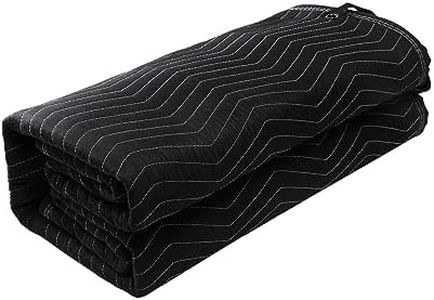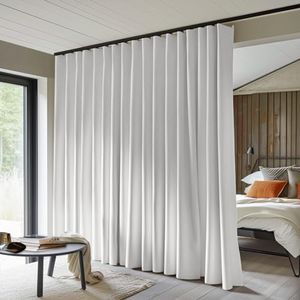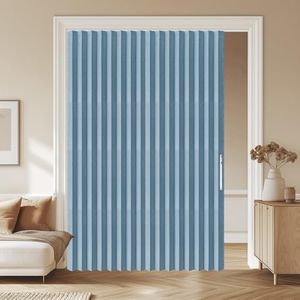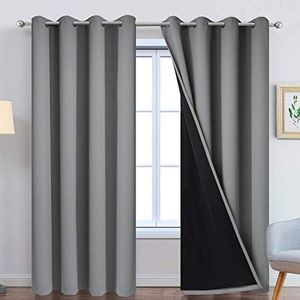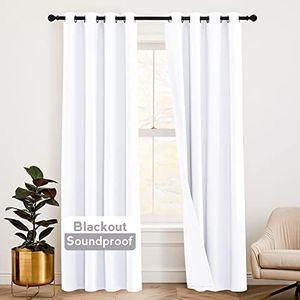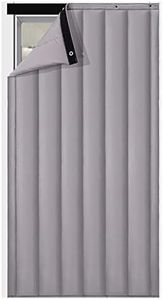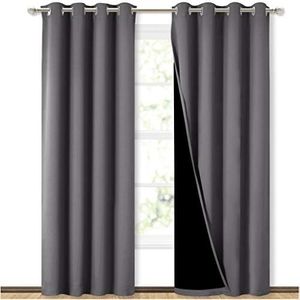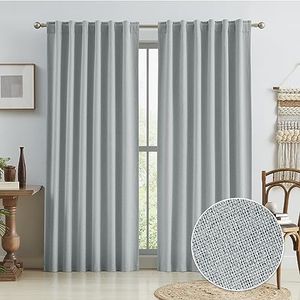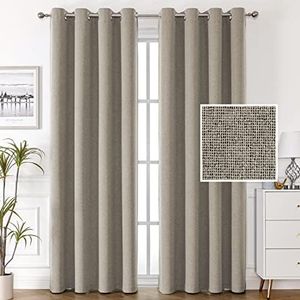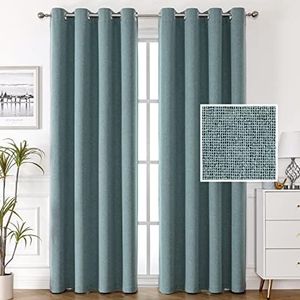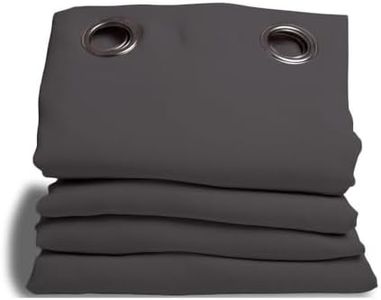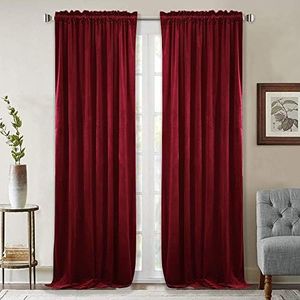We Use CookiesWe use cookies to enhance the security, performance,
functionality and for analytical and promotional activities. By continuing to browse this site you
are agreeing to our privacy policy
10 Best Sound Deadening Curtains
From leading brands and best sellers available on the web.Buying Guide for the Best Sound Deadening Curtains
Sound-deadening curtains, sometimes called acoustic curtains, are a popular way to reduce noise in a room without making permanent changes to walls or windows. These curtains work by absorbing, blocking, or muffling sound, making them great for bedrooms, living rooms, offices, or studios where you want some quiet. When picking the best curtains for your space, it's important to understand key features that influence how well they manage sound. Thinking about where you'll use the curtains and the type of noise you're dealing with will help you make the best choice for your needs.Material Thickness and DensityMaterial thickness and density determine how well the curtain can block or absorb sound. Thicker and denser fabrics usually perform better because sound has a harder time passing through them. When comparing options, you’ll notice curtains ranging from regular-weight fabric to those with heavy, multi-layered construction. For minor noise reductions, such as muffling household sounds, regular thick fabric may be enough. For traffic, loud neighbors, or music, heavy multi-layer or tightly-woven options will be more effective. Pick based on how much noise you want to cut down and where you’ll hang the curtain.
Curtain Size and CoverageThe size and coverage mean how much area the curtain covers, both in terms of width and height. For best sound reduction, curtains should overlap the window or door frame generously, extending several inches past the edges and reaching from ceiling to floor. Standard-sized curtains fit regular windows, but for large windows, sliding doors, or walls, look for extra-wide and long panels. Choose sizes that will completely cover the space you’re trying to soundproof, since any gaps will let noise through.
Number of LayersThe number of layers refers to how many fabric or material layers are sewn together in the curtain. More layers usually mean better sound absorption and blocking. Single-layer curtains offer basic noise reduction, ideal for reducing echo or light chatter. Double- or triple-layer products are designed for more serious sound control. If you’re dealing with heavy noise or want maximum quiet, opt for curtains with multiple layers.
Mounting MethodThe mounting method is how the curtain hangs—using grommets, rod pockets, or hooks. A proper, snug mount helps prevent sound from sneaking around the curtain’s edges. Grommets and heavy-duty rods are common for heavy curtains and ensure smooth sliding and a tight fit. If you want the best sound control, make sure your curtains hang close to the wall or window, with minimal gaps, regardless of the hanging style.
Sound Absorption Rating (NRC or STC)Some curtains come with sound absorption ratings like the Noise Reduction Coefficient (NRC) or Sound Transmission Class (STC). These numbers indicate how well the curtain absorbs sound or blocks transmission. Higher numbers mean better performance. NRC ratings under 0.5 are light duty, 0.5–0.7 are moderate, and above 0.7 are high performers. If you’re trying to dampen minor noise, a moderate rating may suffice. For serious noise reduction, look for the highest possible ratings.
Aesthetic and Fabric TypeAesthetic and fabric type consider the look and feel, as well as the cleaning method. Velvet, suede, or polyester blends are common and effective. Velvet is heavy and blocks more noise, while polyester blends are easier to maintain. Choose a fabric that matches your room style and suits how much care and cleaning you want to do.
